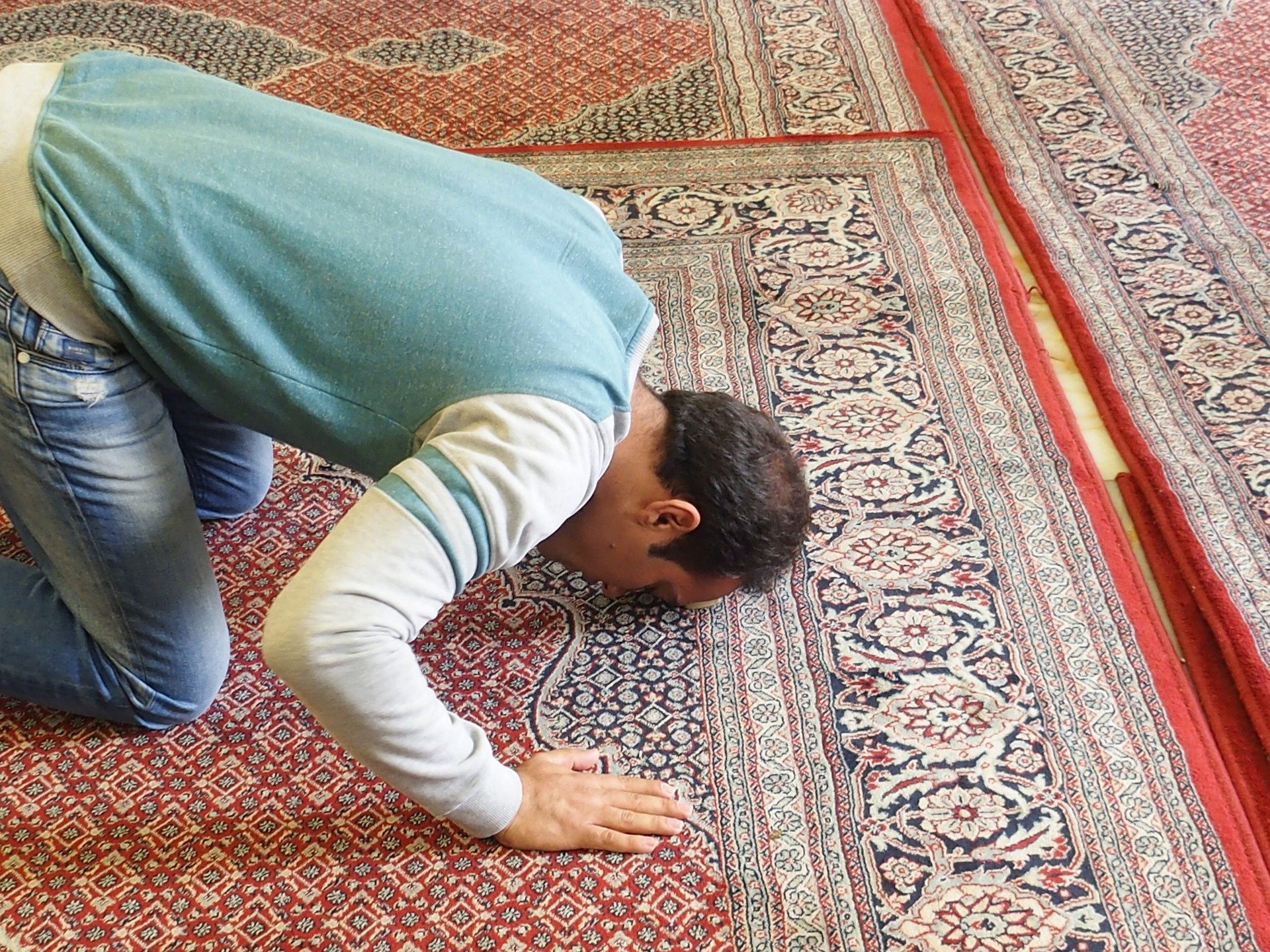Conventional wisdom goes that the children of immigrants will become more naturally integrated into their societies than their parents. Exposed to their country’s culture from birth, second-generation individuals will not experience the same culture shock. Though still negotiating between their home environments and wider society, they will usually identify less with the culture and traditions of their parents’ home countries. In many cases, this assumption holds true. In some, it does not.
American Muslims who were born in the United States are slightly less devout than immigrant Muslims. They pray and attend mosque slightly less often. Yet in some key ways, US-born Muslims seem to embrace their identities as Muslims to a greater extent than immigrants. They identify more with the global Muslim community, they take slightly more pride in their Muslim identities, and slightly more US-born Muslim women wear head coverings.
The patterns tell a story of a population embedding itself more, not less, in the cultural markers of its international roots, undermining conventional wisdom.

The respondents in our survey were mostly first-generation immigrants. They outnumbered native-born respondents (second-generation and later) roughly two to one, and almost all native-born respondents were second-generation. Such a population provides an ideal point of reference to American Muslims. And just the same as American Muslims, the divisions (or lack thereof) between our immigrant and native-born respondents can be puzzling, peculiar, and unexpected.
Deep Roots in Religion, Near or Far
One of the most striking contrasts lies in the sex gap between these two groups. It is well-established that women are underrepresented in the global atheist and agnostic population. But female immigrant respondents in our survey were even less common. They constituted only 34% of all immigrants, compared to women’s 44% share in the native-born population. This likely reflects the higher rate of male immigration from Muslim-majority countries—which in turn reflects the ancient menace of female subjugation. Rights to exercise basic autonomy, such as traveling without a guardian, are too often enjoyed only by men.
On some questions where one might initially expect pronounced divisions between these groups, we find uniformity instead. For example, we asked respondents whether they were open about their apostasy and whether their families pressured them to keep quiet about it. One might expect a greater degree of openness among the native-born; they and their families had been exposed to and immersed in secular culture.
Yet reality does not agree with this expectation.
There is almost no difference in the number of immigrant and native-born respondents who were open about their lack of faith (32% and 34%, respectively). The same holds true for how many were pressured by their families or friends to keep quiet about their apostasy (54% and 56%). It would seem that even in the “enlightened” West, tolerance for apostatizing within Muslim communities is little better than in the world’s most restrictive theocracies.
And what about adjusting to life after apostasy? One might expect respondents native to North America to have an easier time acclimating themselves to a secular life. In fact, the truth is the opposite. The number of immigrant respondents who reported difficulties with such adjustments was 56%. The number of native-born respondents who had difficulties adjusting, in contrast, was 71%.
The same principle applied in personal relationships. One might expect native-born respondents to know more ex-Muslims than immigrants, who come from environments where deconversion frequently causes social death, occasionally even physical death. In reality, more immigrant respondents knew an ex-Muslim before they apostatized.
Alienation and Repression
Perhaps some of these differences are not the peculiarities they may initially seem. This is especially true when taking into account respondents’ religious counterparts. A second-generation retreat into Islamic identity among those who stay Muslim is perfectly consistent with many of these ex-Muslims’ responses. How, then, might one explain the overarching phenomenon?
It may be this: unfortunately, second-generation Muslims see America as far more hostile to people of their faith than do their parents. Only 30% of US-born Muslims say that Americans are generally friendly to Muslims, compared to fully 73% of immigrants—a massive 43-point gap. A majority also say that it has become harder to be a Muslim in America, while only a minority of immigrants say the same.
It makes sense, of course, that immigrants would view America more favorably—they are the people who made the monumental effort to move there, leaving their home countries behind. But, most likely, a younger US-born Muslim population would possess worldviews colored much more by the post-9/11 world and issues surrounding anti-Muslim bigotry. As such, they may feel especially conscious of their status as minorities.

But it is more than this. These numbers strike at what it means to be a religious minority. Most American Muslims find the twofold barriers of ethnicity and religion between them and the mainstream of American and Canadian society. Even native-born Muslims can find an easy point of identification with co-religionists which they cannot find elsewhere.
To leave Islam, then, is to give up a sense of community which may grant reprieve to one who otherwise feels like an outsider wherever they go. To shun it is to shun many of those in the country with whom one may have the most in common. Combine this with an environment where Muslims are so often reminded that they are “different,” and one can hardly be blamed for taking refuge where there is most familiarity.
The tragic outcome of these confluencing factors, of course, is that leaving Islam in the liberal West appears little easier than it is in repressive theocracies. Secular influences do not create unlimited tolerance for free thought, and they may not even reach those communities for whom religion is so integral.
When 16-year-old French teenager Mila Orriols faced death threats and harasment after publicly calling Islam a “shitty religion,” it ignited an argument across France. Mila, who said she was responding to a Muslim who called her a “dirty lesbian” and “dirty whore,” found allies in many, including French President Emmanuel Macron, who insisted that blasphemy “is no crime.” But Macron’s greatest political rival, leader of the far-right party known formerly as the National Front, Marine Le Pen, chimed in as well: in speaking against Islam, she said, Mila was braver than the entire French ruling class of the last 30 years.
No matter the tradition, religious oppression always seems to weigh heaviest on women. The burdens of male guardianship, clothing regulations, and modesty culture cast a shadow over the lives of countless women in Muslim-majority countries—and even in Muslim communities in the West. Ex-Muslim men and women do not experience their departures from Islam in the same ways, nor are their experiences with the faith identical. Gleanings from our survey make this reality evident.
What does religion do best? Social cohesion? Stabilizing society’s moral compass? Keeping people a safe distance from the precipice of nihilism? Or – maybe – just maintaining adherence to rituals?
The 2017 Pew poll of American Muslims found that 24% of those raised Muslim leave Islam. The GAMAAN survey of 50,000 Iranians found that 46.6% are religiously unaffiliated. The 2008 Arab Youth Survey found that 68% of Arab youth saw religion as central to their identity; the passage of 12 years and a more representative sample saw this number fall to 40%. This number was just 8% in the UAE, 10% in Yemen, and 12% in Oman. The survey also reported that “[f]or the ninth consecutive year, the UAE remains the preferred nation for young Arabs to live in and for their own nation to emulate.” The Gezici Research Center found that 28.5% of the Turkish Generation Z identify as “unbelievers.”
Ex-Muslims are a large, diverse, and growing population, particularly in the West, symptomatic of much-discussed trends toward secularization writ large. At the same time, they are frequently glossed over, forgotten about, overlooked, and rendered invisible.


